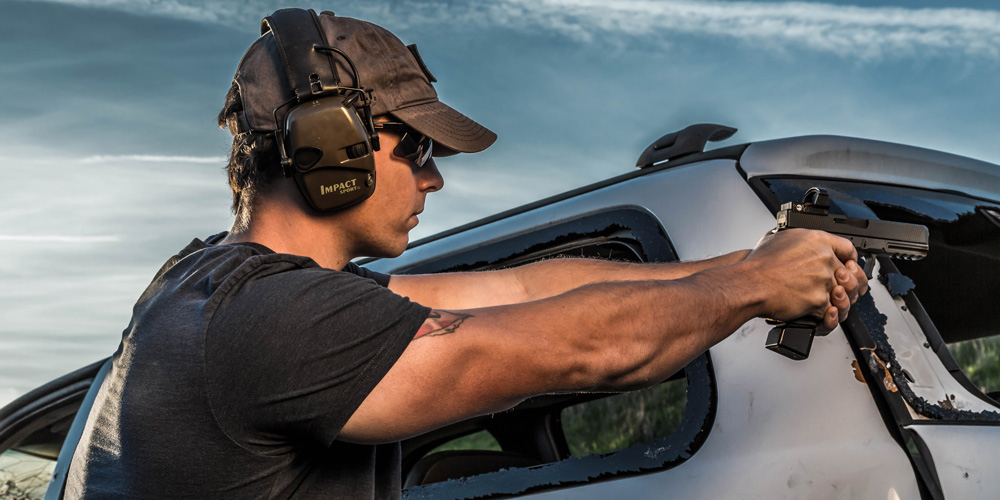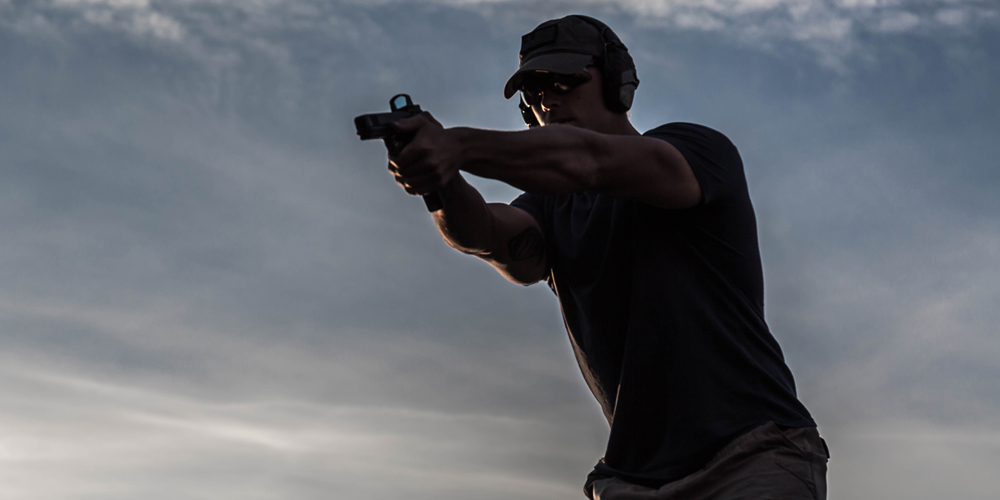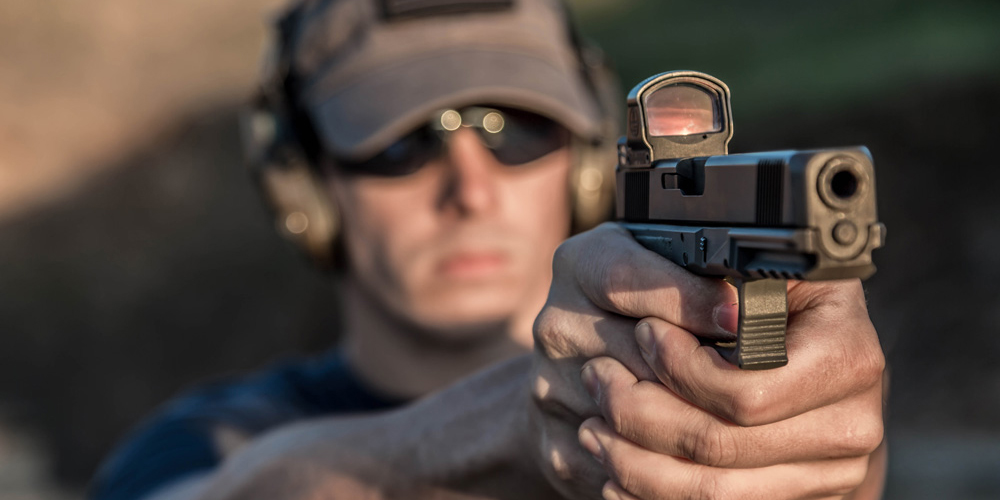Threat Scenarios is proud to present our second Tactical Handgun Match at the Linden Gun Range in Linden, CA on September 29th, 2019. This exciting event will feature a variety of situations designed to showcase your shooting skills. Each course will feature a 180 degree field of fire, multiple positions, as well as target engagement from behind cover and on the move. Come shoot Sunday!

Test Real World Skills
Neutralize paper and steel targets with speed
and accuracy.
Fire and move.

Use Real World Equipment
No race or gamer gear allowed.
Shoot your duty, CCW, or home defense firearm.

Practice Real World Focus
Match Entry Fee
Early Bird
Standard
Prizes
Free Match
Best Overall Individual Time
The full match fee will be refunded to the top placing finisher.
3 Free Matches
Best Overall Team Time
All team members of the best performing team will receive a full match refund.
Random Draw
Special Prize
One random draw winner will receive a mystery prize at registration!
FAQ
CONTACT US for questions not covered below.
Linden Gun Range is offering a prep course for new shooters. Click HERE for more info.
Match Information
The rules are designed to:
For example, one stage may require you to navigate a brief obstacle course prior to shooting. In this situation, the obstacle course will be run under a par time (as in you will have 30 seconds to complete the obstacle course portion). Competitors who complete the obstacle course portion in less than 30 seconds will simply have more time to rest before the actual stage time begins.
No special protective gear (like kneepads or gloves) is required.
If you have had no previous organized training, we require you to have completed a competition preparatory course prior to participating in the match (such as the Linden Gun Range New Shooter Course).
Safety Rules & Procedures
When you arrive at the range, your firearm must be UNLOADED in a closed case. After match registration, you will be directed to one of many SAFE AREAS in which you can unbox and holster your unloaded firearm (with the hammer down and no magazine inserted). SAFE AREAS are the only places where you are allowed to handle your firearm without range officer supervision.
No handling of ammunition is allowed in the SAFE AREA.
Violation of any range safety rule at any time will result in match disqualification.
When you're not immediately up next on a stage, you are expected to help tape, paint, and reset targets.
When it is your turn to shoot, the range officer will issue you several commands which you will follow prior to beginning the stage.
The handgun "ready condition" will be specified in the stage briefing, but generally will require either the hammer to be down (DA) or a thumb safety to be engaged (SA) on firearms with external hammers (striker fired handguns do not require external safeties to be engaged).
When it is your turn to shoot, you will be called up by the range officer and directed to do the following:
- MAKE READY (now you may load your firearm, take a sight picture, or do what you need to do in order to get ready to shoot the stage, including assuming the start position).
- ARE YOU READY? (if you say anything other than "NO" the range officer will proceed with the range commands).
- STANDBY (the start signal will go off in the next couple seconds).
- TIMER BEEP (this is your signal to start shooting).
- IF FINISHED, UNLOAD AND SHOW CLEAR (if you're done with the stage, clear the firearm in front of the range officer by dropping the magazine and ejecting any round from the chamber).
- IF CLEAR, HAMMER DOWN (pull the trigger on the unloaded gun to demonstrate that it's unloaded).
- HOLSTER (reholster your handgun).
- STOP! (if you hear this, freeze and wait for further instructions).
While the Tactical Match contains stages which require real world skills, it is still necessary to institute several safety rules which are universal to any practical shooting range. During the course of fire, if the participant does any of the following, it will result in an immediate disqualification:
- Breaking the 180. The gun must be pointed downrange at all times, even when the competitor is moving uprange. This is enforced through an invisible line running parallel to the rear berm. If the muzzle points anywhere behind that line at any point (even if the muzzle is directed at the sky or the ground), it will be considered to be breaking the 180.
- Finger in the trigger guard while not engaging targets or while reloading.
- Accidental (Negligent) Discharge.
- Sweeping any part of your body with the gun's muzzle at any time.
- Reholstering a loaded firearm, except on the MAKE READY command.
- Losing control of the firearm at any point (including dropping the firearm, bobbling and catching it, or knocking it from a prop or a table). This rule does not extend to magazines, which may be dropped at the competitor’s discretion.
Equipment
MINOR and MAJOR handguns compete in the same division, with MAJOR being given a scoring advantage due to increased recoil.
RESTRICTIONS:
Certain “race type” handguns are specifically not allowed for this match:
If you want to shoot a gun which you believe may be disallowed by the rules, please Contact Us HERE and we may grant an exception to allow you to shoot the match.
View the full RULES here.
Power factor is calculated by the weight of the bullet in grains multiplied by the velocity in feet per second / 1000. (180gr bullet travelling 1000fps = 180PF) Our power factor floors are:
You should bring at least 200 rounds.
Holsters do not require retention features to be enabled (and we recommend that Serpa buttons be removed for safety reasons). You will not be moving much from the start position with a loaded and holstered firearm.
A single pouch capable of carrying two 10 round magazines will be enough for this match.
You should bring at least 4 magazines if each magazine only holds 8 rounds, or 5 magazines for a 7 round magazine capacity.
Scoring
We will use standard IDPA torso targets for the match. Each target has three scoring zones: -0, -1, -3. (Click HERE for an example.) For the sake of simplicity (and to avoid confusion with the scoring zones), we will be referring to those scoring areas as -0 = Alpha, -1 = Charlie, -3 = Delta.
Targets are scored by either being neutralized or not being neutralized. There are no "point totals" for hits. Targets will be considered neutralized when hit with at least two shots in areas which depend on the power of your ammunition:
- 9mm (MINOR power factor): Two hits on the target with at least one shot in the Alpha (center zone) and one hit anywhere else on the target. Or two shots in the Charlie zone. Example of a failure to neutralize: Charlie/Delta.
- 10mm/40S&W/45ACP (MAJOR power factor): Two hits on the target, with at least one being a Charlie or Alpha. Example of a failure to neutralize: Delta/Delta.
Each Failure to Neutralize (FTN) will incur a 3 second penalty.
Some stages may require three shots to the target (two to the body, and one to the head). In this event, a miss on the head will also result in a Failure to Neutralize penalty.
All courses of fire will be clearly laid out in advance to the competitor, including the order of shooting positions and various stage requirements (such as dragging a dummy with one hand while shooting).
Procedural Penalties will be assessed for:
Targets may be engaged in any order from shooting positions within the fault lines, unless specified by the stage description. For example, a competitor may choose to engage targets from right to left, or left to right. Stage descriptions may specify a certain order for target engagement (e.g. two shots to the body on each target, then one shot to the head on each target).
Stages will be designed in such a way that an efficient tactical approach to a target array will likely be the fastest. An example of this is a shooter engaging targets as they become visible as he or she rounds a piece of cover. Shooters will also never run past open, non-neutralized targets.
If you are interested in focusing on tactics such as slowly slicing the pie, assessing threats, and communicating, we highly recommend that you register for one of our force-on-force classes where you will experience return fire from roleplayers. However, we find that skills gained from diverse live fire training often transitions very well into the shoothouse.
Yes. Law enforcement officers are eligible to compete in a separate division in addition to being scored within the overall results. To compete as a law enforcement officer, just click the relevant button during the registration process.
Yes, if you would like to shoot the match for no overall score, you are welcome to do so. In this case, you will receive a copy of your scorecard but your overall time will not be publicly posted with the remainder of the match results. You will still be eligible for random draw prizes (but not performance prizes from the main match).
If you would like to shoot for no score, just click the relevant button during the registration process.
Register
Bookings are closed for this event.

